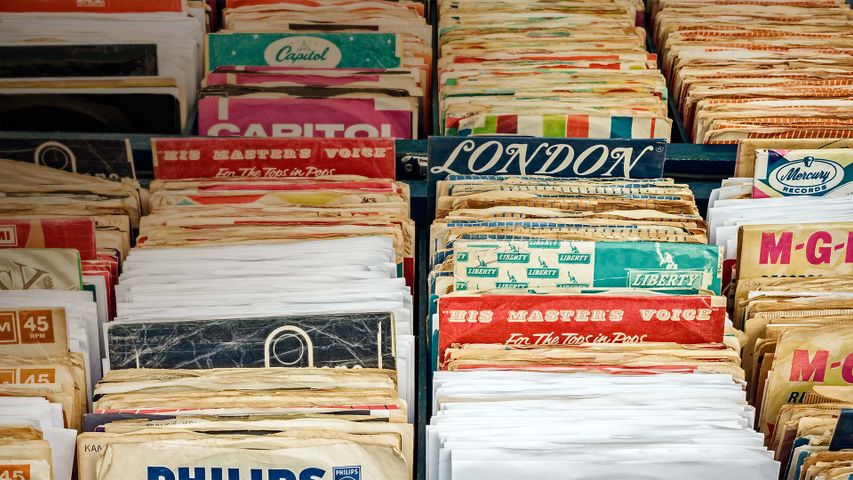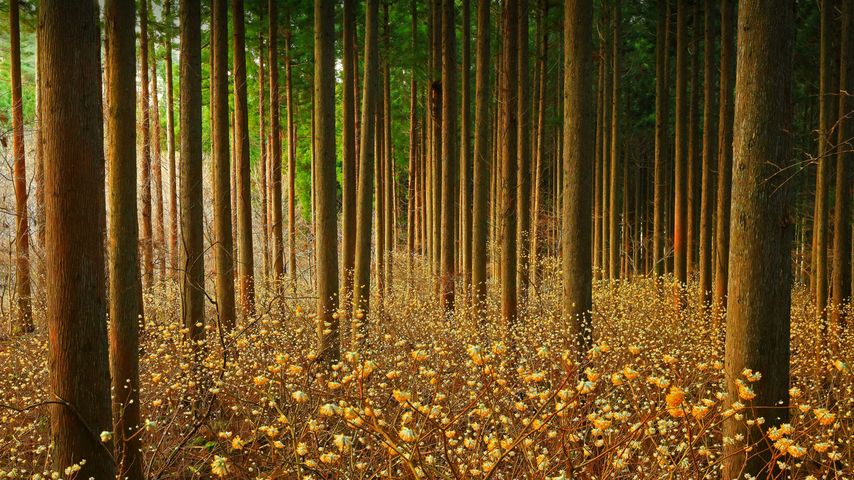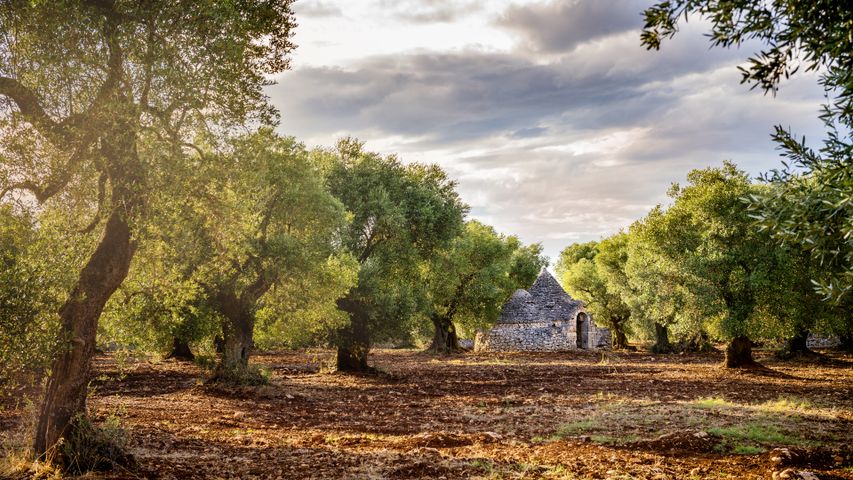Mitsumata (aka paperbush) in a forest in Japan
© nattya3714/Getty Image
Mitsumata, the money shrub. Mitsumata blossoms
The mitsumata blossoms pictured in the forest here, are beautiful in their natural state but the bark of the mitsumata shrub (Edgeworthia chrysantha) has much more to offer. Originally brought from China to Japan by monks, the green plant is now a staple of Japanese papermaking and one of three main ingredients in traditional Japanese paper known as washi.
No wonder, then, that it’s also known as the Oriental paperbush. Mitsumata washi is dense and holds ink well - it’s a favourite of artists and calligraphers - and sheets of mitsumata paper are used in traditional shoji screens. The dense, short fibre from the inner layer of bark helps create a sturdy currency too. Mitsumata made its Japanese banknote debut in 1879, and it’s still used in currency today.
Spring’s the time to catch the golden flowers in bloom - you’ll smell the heady fragrance before you see the bush itself. After the flowers fade, the leaves take on a bluish, silvery hue and in autumn they turn golden themselves.
Related Images
Bing Today Images





 Bicycles on a bridge in Utrecht, Netherlands
Bicycles on a bridge in Utrecht, Netherlands
 Knuthöjdsmossen nature reserve, Sweden
Knuthöjdsmossen nature reserve, Sweden
 Kilchurn Castle reflecting in Loch Awe, Argyll and Bute, Scotland
Kilchurn Castle reflecting in Loch Awe, Argyll and Bute, Scotland
 Giant's Tomb in autumn, Bouillon, Belgium
Giant's Tomb in autumn, Bouillon, Belgium
 Olive grove, Valle d'Itria, Puglia, Italy
Olive grove, Valle d'Itria, Puglia, Italy
 Vancouver Coastal Sea wolves in Great Bear Rainforest, British Columbia, Canada
Vancouver Coastal Sea wolves in Great Bear Rainforest, British Columbia, Canada
 Grasmere, Lake District, Cumbria, England
Grasmere, Lake District, Cumbria, England
 Pumpkin field, Victoria, British Columbia, Canada
Pumpkin field, Victoria, British Columbia, Canada

